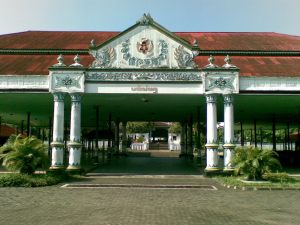
Yogyakarta Special Region (Daerah Istimewa Yogyakarta, DIY) is officially one of Indonesia’s 32 provinces. Yogyakarta is one of the foremost cultural centers of Java. This region is located at the foot of the active Merapi volcano, Yogyakarta was in the 16th and 17th centuries the seat of the mighty Javanese empire of Mataram from which present day Yogyakarta has the best inherited of traditions. The city itself has a special charm, which seldom fails to captivate the visitor.
This province is one of the most densely populated areas of Indonesia. The city came into being in 1755, after the Mataram division into the Sultanates of Yogyakarta and Surakarta (Solo). Gamelan, classical and contemporary Javanese dances, wayang kulit (leather puppet), theater and other expressions of traditional art will keep the visitor spellbound. Local craftsmen excel in arts such batiks, silver and leather works. Next to the traditional, contemporary art has found fertile soil in Yogya’s culture oriented society. ASRI, the Academy of Fine Arts is the center of arts and Yogyakarta itself has given its name to an important school of modern painting in Indonesia, perhaps best personified by the famed Indonesian impressionist, the late Affandi.
Yogyakarta is often called the main gateway to the Central Java as where it is geographically located. It stretches from Mount Merapi to the Indian Ocean. There is daily air service to Yogya from Jakarta, Surabaya and Bali as well as regular train service and easy accessibility by road. Yogyakarta is commonly considered as the modern cultural of Central Java. Although some may prefer Solo as a good runner up, Yogyakarta remains the clear front-runner for traditional dance, Wayang (traditional puppetry) and music.
Yogyakarta has more than just culture though. It is a very lively city and a shopper’s delight. The main road, Malioboro Street, is always crowded and famous for its night street food-culture and street vendors. Many tourist shops and cheap hotels are concentrated along this street or in the adjoining tourist area such Sosrowijayan Street.
A. KERATON / SULATAN PALACE
Keraton Kesultanan Ngayogyakarta Hardiningrat or Keraton Jogja is a living place for Sultan Hamengkubuwono and his family. Most parts of his house are being used as museum to display the collections and souvenirs got from his relatives abroad. In this place, tourists can also see and learn about Java culture won’t be forgotten easily.
History of Keraton Jogja
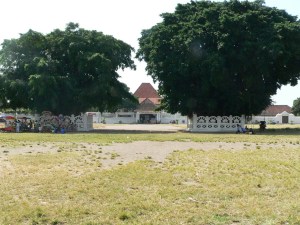
Keraton Jogja was built by Pangeran Mangkubumi at beringin (banyan) forest in 1755, several months after Giyanti agreement. Beringin forest was chosen because this forest was located between two rivers that were predicted as a good location to avoid being flooded. Another assumption, this location was pesanggrahan (gatehouse), named Garjitawati that was used for funeral processing of Kings Mataram Kuno. Although the ages of this Keraton (Palace) is more than thousands and did break due to earthquake in 1867, it still stands up well.
Spatial Structure and Architecture

Generally, the main part of Keraton Jogja is starting from north to south: Gapura Gladhag in north which is its parts are Alun alun Ler Complex, Masjid Gedhe, Pagelaran complexes, Siti Hinggil complexes, Kamandhungan Ler complexes, Sri Manganti complexes, Kedhaton complexes, Kamagangan complexes, Kamandhungan Kidul complexes, Siti Hinggil Kidul complexes, Alun-alun Kidul and Plengkung Nirboyo in south.
North and South parts of Kedaton are symmetries because some building in north Kedhaton toward to North and in South Kedhaton toward to South. Furthermore, buildings are in Kedhaton toward to West or East.
Sultanate Palace 21 Keraton Jogjakarta (Sultanate Palace)
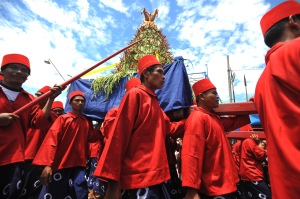
Besides, the main parts that toward to North and South, Keraton also has other parts, like Pracimosono complexes, Roto Wijayan Complexes, Keraton Kilen complexes, Taman Sari complexes, and Istana Putra Mahkota complexes. Around and Inside Keraton, there is barrier system that contains of Cepuri and Baluwerti wall. Outside of this wall, there are some buildings that connect with Keraton, like Tugu Pal Putih, Gedhong Krapyak, Ndalem Kepatihan, and Pasar Bering Harjo.
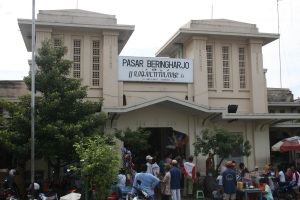
For architecture, buildings in Keraton Jogja have traditional Java architecture and some certain parts have foreign architecture, like Portuguese, Netherland, and China. Forms of buildings usually have Joglo form in which Joglo that is opened called Bangsal and Joglo that is closed with wall called Gedhong. Besides, there are some buildings that have canopy using bamboo as roof and pole is called Tratag.
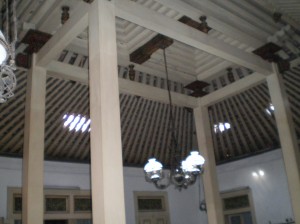
Surface of Joglo roof is trapezium which is made of sirap, or land roof that has red and/or silver color. This roof is supported by the main pole which is called Soko Guru and other poles. These poles usually have dark green or black with ornaments that have yellow, green, red color, etc. in certain buildings like Manguntur Tanngkil, ornaments that are used are Putri Mirong, calligraphy of Allah, Muhammad, and Alif Lam Min Ra in center of poles.
Visiting Keraton Jogja

Visiting Keraton Jogja will give tourist unforgettable experiences. Entering this keraton, you can use two ways: Tepas Keprajuritan (front of Alun-Alun Utara) and Tepas Parawisata (Regel Kebon). If you enter from Tepas Keprajuritan, you will find Bangsal Pagelaran and Siti Hingil, and find some kereta (carriage) keraton. While if you enter form Tepas Parawisata, you will find Sri Marganthi complex, Kedhaton which has Bangsal Kedaton.
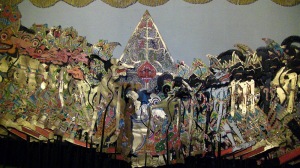
There are many things that you can find here, like abdi dalem (people who work in Keraton Jogja) do their job or Keraton’s collection, such as photo, replica, miniature, batik (Java traditional clothe), etc. Besides, you can watch Jogja’s art live performance for free, like wayang (puppet) orang, wayang kulit, wayang golek, dance, etc. If you need to find another live performance, you can come on Selasa (Tuesday) wage to watch jemparingan (archery competition) in which its competitors should wear Java’s traditional clothes.
Sultanate Palace 3 Keraton Jogjakarta (Sultanate Palace)
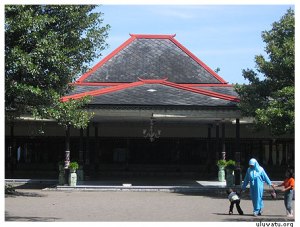
Inside of Keraton, you can find batik museum that is formalized by Sultan Hamengku Buwono X in 2005. In this museum, you can see various batik collections and batik tools from Hamengku Buwono VIII to Hamengku Buwono X. By the way Hamengku Buwono is title that is given for Sultan Jogja continually.
If you are interested in learning Java culture, Keraton Jogja provides some course to learn various Java’s arts, like Java dancing, nembang (singing by using Java style), writing or reading Java language, etc.